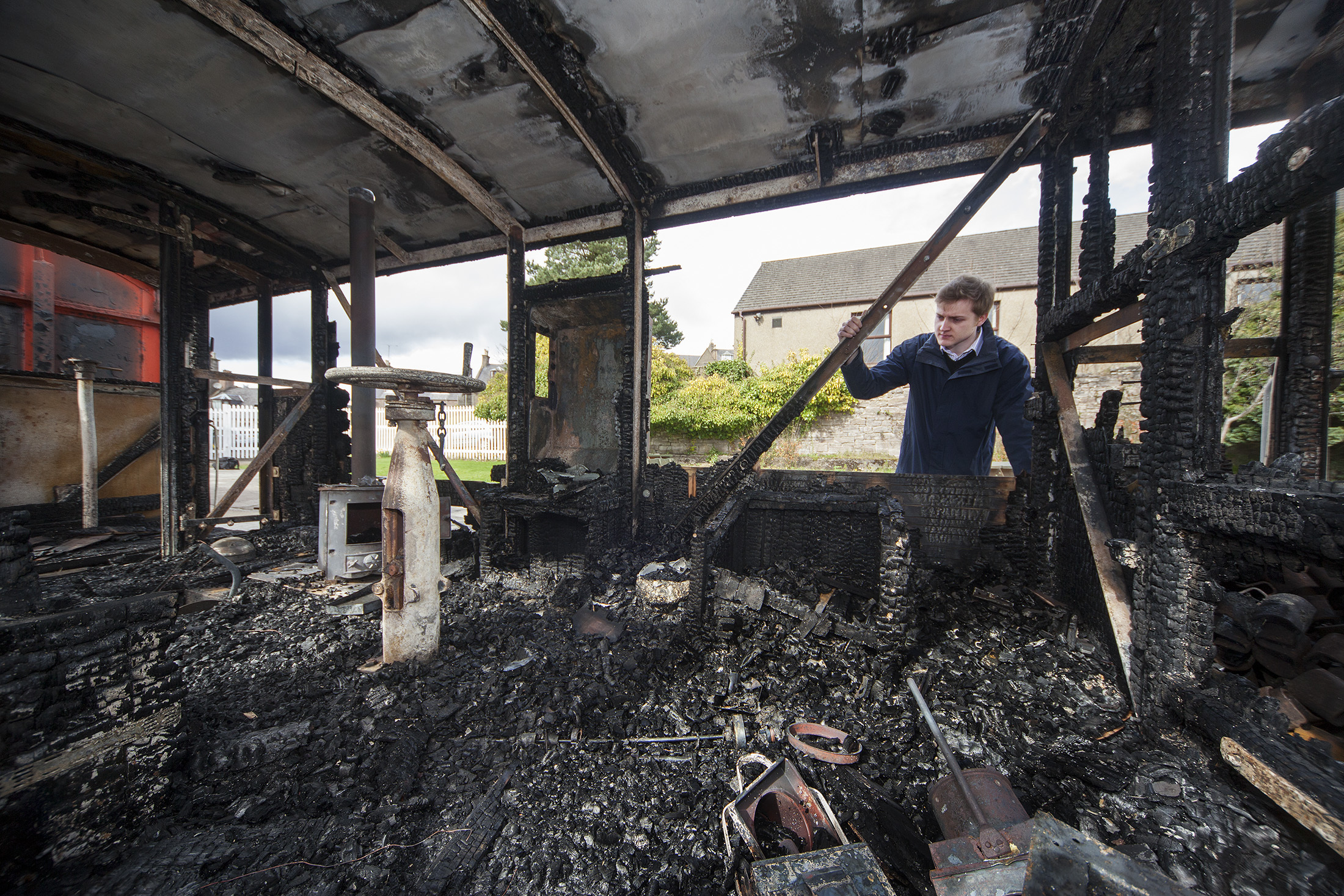A 1940s brake van which was destroyed in an arson attack will be rebuilt following an Angus fundraising campaign.
Volunteers spent £5,000 and four months painstakingly restoring the 1949 LMS brake van and work was completed in December 2014.
The vehicle went back into use almost straight away but its new lease of life was short-lived when it was set alight in April.
Brechin’s Caledonian Railway set up the Rebuild The Brechin Brake Van appeal to help raise funds to contribute towards the cost of the restoration.
Events manager Andrew Pegg said: “With the summer operating season now done and dusted, we are now closed for maintenance until our Santa Specials in December.
“This has now given us the available time to get back on with rebuilding our beloved LMS brakevan after it was subjected to an arson attack back in April this year.
“Following the success of our crowdfunding page set up in wake of the disaster, we have so far managed to raise a massive £7,000 towards rebuild from numerous donations from local residents and businesses, with a further £2,500 being donated by GrainCorp in Australia – who own Baird’s Malt in Arbroath – for improving security at our Brechin station.
“The current fund total, along with the offer of materials from Murray Engineering of Brechin, should cover almost all of the material costs.”
The money should cover the materials for the hardwood frame and floor, and softwood for the cladding and roof.
It does not cover the sub-contractor costs for manufacturing the frame or other material costs such as paint, fixings or roofing.
Mr Pegg said volunteers are currently searching archives for engineering drawings for the body of the wagon to have the replacement hardwood frame manufactured by a local subcontractor.
He said: “This is necessary as we unfortunately do not have the available time to manufacture this ourselves.
“We intend for work to commence on the frame build towards the end of this year or the start of 2017.
“Once it has been manufactured, we can begin work on assembling it onto the frames of the wagon and begin cladding the internal and external walls as well as fitting a replacement hardwood floor.”
Among those who gave generously towards the appeal were; Eddie and Helen Clark from Texas; Stan and Helen Pegg of Lincolnshire; Dr Martin Stanton of St Andrew’s; George and Ann Mitchell of Brechin; Brechin Community Cinema; Brechin Partnership Fund; Lynn Cunningham Chartered Accountant of Markinch; Strathmore Foods of Forfar; and Strathmore Vintage Vehicles of Glamis.
The LMS brake van was built by British Rail at Derby Carriage and Wagon works in 1949.
It spent all of its working life travelling up and down the British Isles on the back of goods trains.
As time progressed, more and more wagons were fitted with their own braking systems, gradually making brake vans redundant.
Subsequently, British Rail began selling them off to scrapyards in their thousands.
Back in 1990, when the preservation of the Brechin to Bridge of Dun branch line was in its infancy, several volunteers visited Arnott Young Scrap Merchants in Glasgow to enquire about purchasing one of the brake vans.
A bid to save the vehicle from the cutter’s torch was successful and plans were quickly drawn up to move it to Brechin for restoration.
After the initial restoration, the brake van spent many a happy year travelling up and down the Caledonian Railway’s four mile branch line, transporting volunteers, passengers and equipment to where they needed to be.










